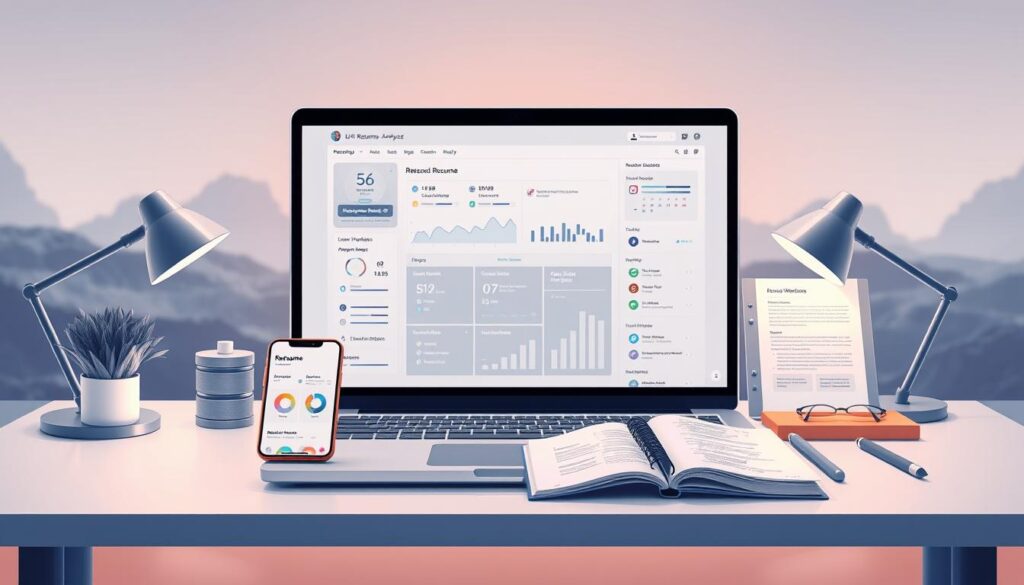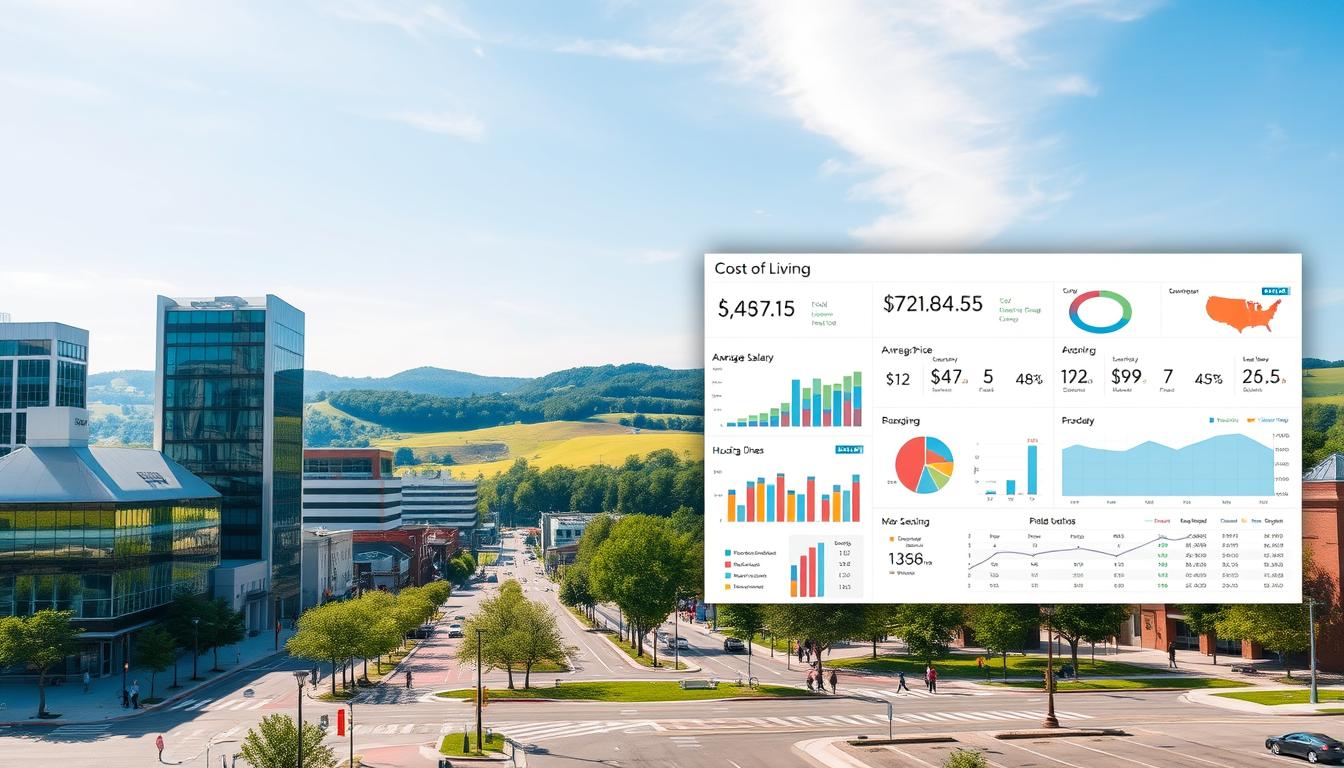UX job postings plummeted to just 70% of 2021 levels last year, creating the most competitive market in a decade. With experienced professionals now competing for fewer roles, standing out requires more than polished wireframes and usability reports.
Today’s hiring managers seek candidates who blend technical expertise with business storytelling. A recent UX researcher career guide reveals 83% of employers prioritize professionals who can quantify how design decisions impact revenue and user retention.
This shift demands new approaches to skill development and job applications. Specializing in niche areas like accessibility research or AI interaction patterns while maintaining collaborative design process knowledge proves most effective. Tools like RoboApply’s AI resume builder and ATS optimizer help candidates highlight these dual competencies through data-driven application materials.
The solution lies in strategic specialization paired with smart automation. Platforms that streamline your applications while preserving human insight create the hybrid approach needed for 2025’s job market. You’ll maintain personalization through features like tailored outreach sequences while leveraging technology for repetitive tasks.
Key Takeaways
- UX research roles require demonstrated business impact beyond traditional research skills
- Specialization in emerging areas increases competitiveness in tight markets
- Automation tools handle repetitive tasks while you focus on strategic work
- Portfolios must show concrete outcomes, not just process documentation
- Cross-functional collaboration skills remain essential for team integration
Understanding the Evolving UX Research Landscape in 2025
The industry now demands professionals who balance technical precision with strategic influence. Employers increasingly prioritize candidates who translate findings into measurable outcomes, moving beyond traditional data collection.
Current Industry Trends and Employer Expectations
Hiring managers seek user research specialists who connect insights to revenue growth and customer retention. A 2024 UXPA survey found 63% of teams now require proof of business impact in case studies. Cross-functional collaboration skills rank higher than mastery of niche tools, with product managers and engineers expecting clear, actionable recommendations.
Specialized design knowledge remains critical, but employers emphasize adaptability. Roles increasingly require expertise in emerging areas like ethical AI implementation or accessibility compliance. Platforms like Dovetail now integrate automated transcription, but human validation ensures accuracy in sensitive contexts.
The Impact of AI and Technological Advancements
While AI accelerates data synthesis in tools like Figma, 47% of professionals report it only provides partial value. Automated pattern detection saves time, but research interpretation still demands human empathy and context analysis. Current models struggle with bias detection and privacy safeguards, requiring careful oversight.
To stay competitive, pair AI tools with critical thinking. For example, automated resume builders streamline formatting while you focus on crafting outcome-driven narratives. This hybrid approach meets employer demands for efficiency without sacrificing strategic depth.
Optimizing Your Resume with RoboApply's Tools for UX Roles
Modern UX professionals need resumes that balance technical precision with strategic storytelling. RoboApply’s suite transforms generic applications into targeted career documents that speak directly to employer needs.

Tailored Content Creation Made Simple
The AI resume builder scans job descriptions to surface critical requirements. When applying for a mixed-methods role, it might emphasize your experience with diary studies and survey analytics. The cover letter tool generates narratives linking past projects to specific challenges like “reducing user churn in SaaS platforms” or “improving accessibility compliance.”
Technical Accuracy Meets Human Insight
RoboApply’s grammar checker ensures your materials use industry-standard terms like “participant triangulation” instead of vague phrases. The ATS optimizer identifies missing keywords from UX research postings, increasing visibility in tracking systems. One candidate reported a 40% interview boost after reformatting their resume using these templates for remote tech roles.
Create specialized versions for different niches within minutes. A behavioral research focus might highlight eye-tracking studies, while quantitative roles showcase statistical modeling skills. Export options maintain formatting across LinkedIn, Wellfound, and company portals – no more broken layouts.
Building a Compelling UX Portfolio and Case Studies
Your portfolio is your career storybook in 2025’s competitive market. Hiring teams spend under seven seconds scanning materials before deciding to dive deeper. Focus on demonstrating decision-making skills through projects that reveal your problem-solving journey, not just polished outcomes.
Showcasing Your Research Process Effectively
Document each phase like a detective novel. For a fintech app redesign, explain why you chose diary studies over surveys to capture real-time money management behaviors. Use tools like Figma to create scrollable process maps showing how raw data became actionable insights.
One designer increased interview requests 60% by adding timestamped video clips of user testing sessions. Always link methods to outcomes: “Conducted 15 contextual inquiries → Identified 3 workflow bottlenecks → Boosted task completion by 42%.”
Including Impactful, Standalone Case Study Examples
Select 2-3 studies demonstrating range. A healthcare project might show HIPAA-compliant research tactics, while an e-commerce example highlights A/B testing scaled across global markets. Follow proven case study templates to structure narratives around business impact.
Quantify results visibly: “Reduced support tickets 33% through checkout flow improvements validated with 50+ users.” Pair metrics with direct quotes from stakeholders. Balance text with visual resume design principles – use color coding to differentiate research phases in timelines.
Developing Essential Technical and Soft Skills for UX Research
Success in 2025’s UX field requires balancing precise technical execution with human-centered collaboration. Employers now evaluate candidates through dual lenses: your ability to handle complex research tools and your capacity to build consensus across teams.

Technical Competencies That Deliver Results
Master tools that streamline data collection and analysis. Platforms like Maze for usability testing and Dovetail for interview synthesis help you work faster without sacrificing depth. Learn basic Python or R to analyze quantitative data, but focus on translating stats into product improvements.
Prioritize these three areas:
- Survey design using Typeform/Qualtrics
- Interactive prototyping with Figma/Adobe XD
- Research repository management in Notion/Miro
Communication That Bridges Disciplines
Transform raw data into compelling stories. Practice explaining findings to non-researchers using simple analogies. Record mock presentations to eliminate jargon and refine pacing.
Build collaboration skills through cross-functional projects. Shadow product managers during sprint planning. Co-facilitate workshops with engineers to align technical constraints with user needs. These experiences teach you to advocate for research while respecting team priorities.
Active listening separates good researchers from great ones. In interviews, focus on what participants don’t say. Notice pauses, tone shifts, and contradictions. Document these observations alongside direct quotes for richer insights.
How to Land a User Experience Researcher Job in 2025
Your job search is a strategic puzzle where every piece must connect. Employers now evaluate candidates holistically – your resume, capabilities, and interview performance must tell the same story. This demands intentional alignment across all application materials and conversations.
Three Strategies for Unified Career Positioning
Start by auditing your materials for consistency. Does your resume’s “Skills” section mirror the methods showcased in portfolio case studies? Are interview anecdotes tied to the design challenges employers mention in job posts? One candidate increased offers by 50% after using a research skills guide to align their resume bullets with LinkedIn recommendations.
Target roles matching your current expertise and growth trajectory. Apply for positions where you meet 70% of requirements, then highlight adjacent skills from past roles. A marketing analyst transitioning to UX might emphasize survey design experience while showcasing newly learned usability testing techniques.
Build a 90-day action plan with these steps:
- Map transferable skills from previous roles to UX research frameworks
- Update portfolio case studies weekly based on application feedback
- Practice explaining complex methodologies in simple terms during mock interviews
Track progress using a spreadsheet that links applied roles, required competencies, and skill development milestones. This approach turns scattered efforts into a focused campaign where every application strengthens your candidacy.
Mastering the Interview Process: Portfolio Presentations and Design Challenges
Interviews in 2025’s UX field demand more than polished case studies—they test your ability to think under pressure. Hiring teams use portfolio reviews and live challenges to assess how you approach complex problems and communicate insights. Your success hinges on demonstrating structured thinking while maintaining flexibility during unexpected questions.

Preparing a Clear and Impactful Portfolio Presentation
Start with a 90-second introduction highlighting your unique approach to research. One candidate landed a senior role by beginning with: “I specialize in uncovering hidden pain points through ethnographic studies.” Walk through projects using this framework:
- Problem context (business goals + user needs)
- Method selection rationale
- Key insights and pivot points
- Measured outcomes
Practice explaining why you chose specific testing methods over alternatives. When presenting a healthcare app study, anticipate questions about HIPAA compliance in participant recruitment. Leave 8-10 minutes for Q&A—this is where interviewers assess critical thinking.
Navigating Live Design Challenges and Behavioral Questions
Treat whiteboard exercises as collaborative sessions. For a design challenge about improving a shopping cart, start by asking: “Should we prioritize first-time buyers or power users?” Verbalize tradeoffs between user needs and technical constraints.
Structure behavioral responses using STAR:
“When our team missed a research deadline (Situation), I coordinated asynchronous feedback sessions (Action) to maintain project momentum (Result).”
Discuss failed projects transparently. Explain how a misguided survey led you to adopt mixed-methods approaches—this shows growth while reinforcing process improvement skills.
Leveraging RoboApply's Outreach CRM and Auto-Apply Chrome Extension
Streamlining your application process becomes critical when competing for limited roles. RoboApply’s tools merge targeted outreach with smart automation, letting you focus on strategic networking while handling repetitive tasks.
Maximizing Visibility with the Auto-Apply Feature
The Chrome extension scans leading job platforms like LinkedIn and Indeed, applying to relevant postings in seconds. Custom filters ensure you only target roles matching your specialization, whether it’s accessibility research or AI-driven usability testing.
Pair this with the outreach CRM to maintain professional relationships effortlessly. Automated follow-ups keep conversations warm after initial contact, while tracking features prevent duplicate messages. One user reported securing 3 interviews weekly by combining auto-applications with personalized LinkedIn outreach.
Ensure your materials stay polished with RoboApply’s properly formatted links in resumes and portfolios. The system updates application versions automatically, eliminating manual edits across platforms. This dual approach balances efficiency with authenticity – you maintain control over critical details while scaling your search.
FAQ
How important are case studies for landing a UX researcher role?
Case studies are critical for demonstrating your research process and problem-solving abilities. Hiring managers look for projects that showcase your ability to define problems, select methodologies, analyze data, and drive product decisions. Include 3-5 standalone examples with clear metrics showing business or user impact.
What technical skills do employers prioritize for UX research roles?
Employers expect proficiency in qualitative tools (UserTesting, Dovetail) and quantitative platforms (Google Analytics, Hotjar). Familiarity with AI-powered tools for data analysis and prototyping software (Figma, Miro) is increasingly valuable. Balance these with foundational skills like survey design and usability testing.
How can AI impact UX research careers in 2025?
AI automates repetitive tasks like data tagging and pattern recognition, freeing researchers to focus on strategic insights. However, human-centric skills like empathy, ethical decision-making, and translating findings into actionable recommendations remain irreplaceable. Adapt by learning AI-assisted research tools while deepening stakeholder collaboration abilities.
Should I optimize my resume for ATS systems?
Yes. Use RoboApply’s AI Resume Builder to incorporate role-specific keywords like “user journey mapping” or “mixed-methods research.” Ensure clean formatting with bullet points for scannability. The platform’s Grammar Checker helps avoid ATS-rejection triggers like inconsistent verb tenses or passive voice.
How do I stand out during portfolio presentations?
Structure presentations around problem-solution-impact narratives. Use visuals like affinity diagrams or video clips of user interviews. Practice articulating how your research influenced design changes or business metrics. Anticipate questions about your methodological choices and how you’d adapt to constraints like tight deadlines.
Can RoboApply’s tools help with job applications?
Absolutely. The Auto-Apply Chrome Extension streamlines applications by auto-filling forms across 50+ job boards. Pair this with the Outreach CRM to track follow-ups with hiring managers. For tailored applications, use the Cover Letter Builder to align your UX skills with specific company needs mentioned in job descriptions.
What if I lack direct UX research experience?
Highlight transferable skills from adjacent fields like psychology, market research, or product design. Build credibility through personal projects—conduct usability tests for local businesses or analyze existing apps. RoboApply’s portfolio templates help structure these into professional case studies.
How should I prepare for live design challenges?
Treat challenges as collaborative exercises. Verbally walk through your assumptions, ask clarifying questions, and reference user pain points. Use frameworks like Jobs-to-Be-Done or Mental Models to structure your approach. Demonstrate adaptability by revising recommendations based on new information from interviewers.
What portfolio elements do hiring managers value most?
Prioritize diverse methodologies (interviews, surveys, A/B tests) and cross-functional impact. Include artifacts like research plans, consent forms, and raw data snippets to show rigor. Use before/after examples to illustrate how insights led to improved conversion rates or reduced user friction.
How do I stay updated on industry trends?
Follow thought leaders on LinkedIn, attend NN/g conferences, and complete certifications in emerging areas like accessibility research or AI ethics. Join Slack communities like Mixed Methods to discuss tools like Dscout or Lookback. Regularly update your RoboApply profile with new skills to match evolving job descriptions.


















